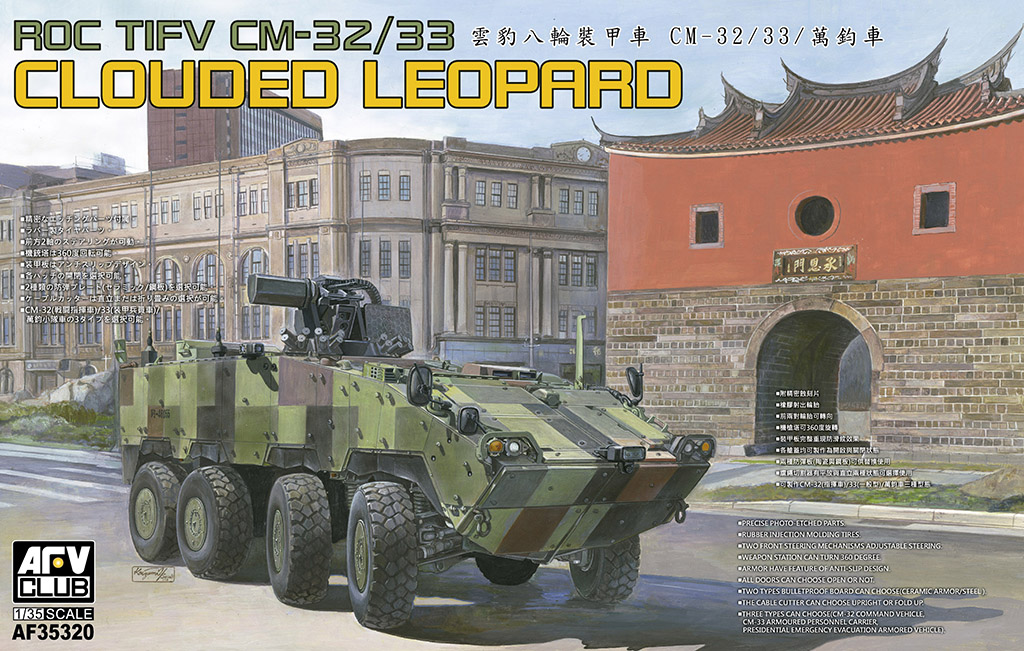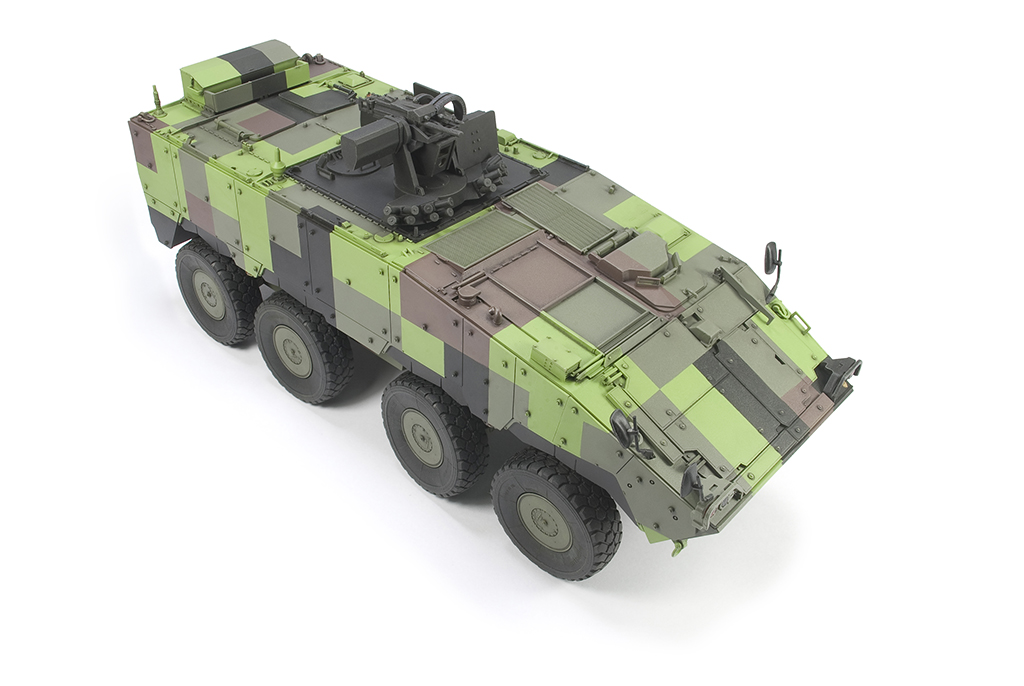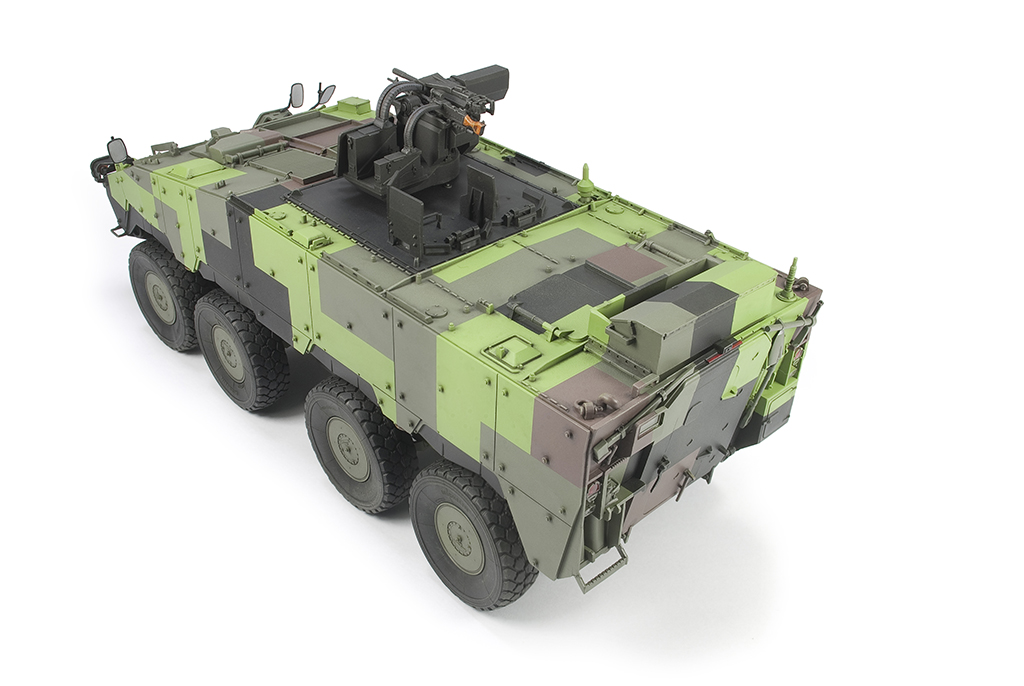Products
ROC TIFV CM-32/33




The amphibious V-150 and V-150S entered service with the Republic of China (ROC: Taiwan) Army in 1981 replacing the aged M2 armored half-track. Prior to service with the ROC Army, the V-150 saw its baptism of fire in Vietnam where they were deployed for patrol, convoy protection, and base defense duties.
The armor of the V-150 could only take the impact of a NATO 7.62mm round (or equivalent). In addition, restrictions on arms procurements placed on Taiwan in 1982 by Communiqué 817 made the development of an IFV (Infantry Fighting Vehicle) a necessity to counter modern adversaries.
Under the recommendation of United States, engineers from the ROC Armored Vehicle Development Center (AVDC) were sent to Timoney Technology Limited in Ireland to receive training on the techniques of designing wheeled IFV’s. In 1992 AVDC engineers completed a prototype six-wheeled IFV, designated the CM31. In addition to the driver and commander, the CM31 was designed to carry up to 10 infantry with front armor capable of withstanding the Russian-made 14.5mm projectile.
By this time, however, eight-wheeled IFVs had become the worldwide trend. Aside from its limited ability as a troop carrier, the mobility of six-wheeled IFV’s isn’t comparable to that of an eight wheeled vehicles. In addition, upgrades, modifications, and the ability to be armed with a turreted, large caliber gun are all limited with 6-wheeled designs hence the CM31 was not accepted by the ROC Army.
Taiwan (the island of Formosa) possesses a well-developed road network, which facilitates wheeled IFVs and their higher speed capabilities. In 2001, the development of a more versatile eight wheeled IFV using the CM31 as a base was initiated by the ROC Army. The newly designed vehicle would replace the aged V-150, the M113 light track vehicles and the M41 light tanks. The new design was to incorporate a traditional coil spring type suspension system with the front 4 wheels responsible for steering allowing for just an 11 meter turning radius. Multiple prototypes commenced the trials process in 2002. In 2005, the new design, designated CM32 was finalized and given the name “Clouded Leopard.” Production began in 2007. Standard armament for the CM32 includes an automatic 40mm grenade launcher and a coaxial 7.62 machine gun. Some CM32’s intended, as command vehicles have enhanced telecommunication systems. A troop carrier version, the CM33, was also produced that has a different antenna installation. Production of the CM32/33 totaled 368 units. A further 284 units of the CM34, a version with a 30mm cannon turret, is to go into production by 2019.
1.附精密蝕刻片。
2.橡膠射出輪胎。
3.前兩軸輪胎可轉向。
4.機槍塔可360度旋轉。
5.裝甲板防滑紋效果。
6.各艙蓋均可製作為開啟與關閉狀態。
7.兩種防彈板(陶瓷與鋼版)可供替換使用。
8.纜繩切割器可製作平放與直立兩種狀態。
9.可製作CM-32(指揮車)/33(一般型)/萬鈞車三種型態。
CM-32/33 雲豹装甲車
1.精密なエッチングパーツ付属。
2.ラバー製タイヤパーツ。
3.前方2軸のステアリングが可動。
4.機銃塔は360度回転可能。
5.装甲板はアンチスリップデザイン。
6.各ハッチの開閉を選択可能。
7.2種類の防弾プレート(セラミック/鋼板)を選択可能。
8.ケーブルカッターは直立または折り畳みの選択が可能。
9.CM-32(戦闘指揮車)/33(装甲兵員車)/ 萬鈞小隊車の3タイプを選択可能。
1. PRECISE PHOTO-ETCHED PARTS.
2. PLASTIC INJECTION MOLDING TIRES.
3. TWO FRONT STEERING MECHANISMS ADJUSTABLE STEERING.
4. WEAPON STATION CAN TURN 360 DEGREE.
5. ARMOR HAVE FEATURE OF ANTI-SLIP DESIGN.
6. ALL DOORS CAN CHOOSE OPEN OR NOT.
7. TWO TYPES BULLETPROOF BOARD CAN CHOOSE(CERAMIC ARMOR/STEEL ).
8. THE CABLE CUTTER CAN CHOOSE UPRIGHT OR FOLD UP.
9. THREE TYPES CAN CHOOSE(CM-32 COMMAND VEHICLE, CM-33 ARMOURED PERSONNEL CARRIER, PRESIDENTIAL EMERGENCY EVACUATION ARMORED VEHICLE).
